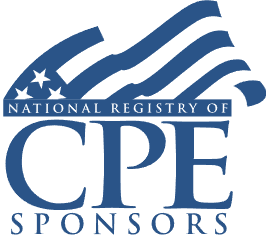Basis Calculations in Section 368 Reorganizations: Tax Deferral Benefits For Subsidiary Shareholders
Reporting Target Company Stockholder Basis in Type B and Reverse Triangular Reorganizations

Welcome! Strafford is now BARBRI! The expert courses you know from the trusted global leader in legal education.
Course Details
- smart_display Format
On-Demand
- signal_cellular_alt Difficulty Level
Intermediate
- work Practice Area
Corporate Tax
- event Date
Thursday, December 14, 2017
- schedule Time
1:00 PM E.T.
- timer Program Length
110 minutes
-
BARBRI is a NASBA CPE sponsor and this 110-minute webinar is accredited for 2.0 CPE credits.
-
BARBRI is an IRS-approved continuing education provider offering certified courses for Enrolled Agents (EA) and Tax Return Preparers (RTRP).
This course will provide guidance to corporate tax advisers and compliance professionals in determining target stock basis in a Section 368 tax-free reorganization transaction. The panel will offer insights to the accounting, calculations and reporting requirements pursuant to a Section 368 corporate reorganization.
Faculty

Mr. Skinner focuses his practice on U.S. international taxation, with a particular emphasis on tax planning and international corporate transactions. He has broad experience in international tax issues for U.S. corporations, foreign corporations, and high net-worth individuals, and has represented clients across a variety of industries. He teaches international taxation as an adjunct professor in San Jose State University’s MST program, and speaks and writes frequently on international and corporate tax issues.
Description
Section 368 of the Internal Revenue Code allows companies to complete a tax-deferred reorganization if it meets certain requirements and conditions. Stock distributions and exchanges must conform to the basis transfer rules found in IRC 362 for the transaction to be tax-free.
There are seven different types of corporate reorganizations/restructurings allowed under Section 368. Each type of reorganization transaction or event has specific reporting requirements, which tax advisers must understand through each stage of the transaction.
The major challenge in reporting a tax-free reorganization under Section 368 is identifying the shareholders and establishing stock bases for the shares they hold. While the Service allows corporate tax advisers to use aggregation methods to calculate shareholder basis in target stock exchanged in a Section 368 transaction, accurately reporting transferred basis remains a complex exercise, with several key issues requiring IRS guidance.
Tax advisers must know the tax and basis transfer rules for each type of transaction specified in Section 368 to accurately report basis transfers and to advise corporate clients of the tax consequences of various spinoff and reorganization transactions.
Listen as our experienced panel provides a practical and hands-on guide to basis calculations challenges arising from a Section 368 reorganization.
Outline
- IRC Section 368 types of reorganizations
- Requirements for tax-free reorganizations (Section 368 types A-G)
- Tax consequences of a Section 368 reorganization
- To acquiring corporation
- To target/acquired corporation
- To shareholders
- Section 362 basis transfer rules
- Basis calculation rules and IRS guidance in a “Type B” reorganization
- Basis calculation issues in a “reverse triangular” reorganization
- Required filings
- Available elections and alternative calculations using net inside basis
Benefits
The panel will discuss these and other crucial topics:
- Types of tax-free reorganization and requirements of each
- What circumstances require a tax adviser to calculate per-shareholder basis in target/acquired stock
- Calculations and schedules to prepare in anticipation of a reorganization?
- Basis calculations in a straight “Type B” reorganization vs. in a “reverse triangular” reorganization
NASBA Details
Learning Objectives
After completing this course, you will be able to:
- Differentiate between various types of reorganization transactions defined in Section 368 qualifying for tax-deferral treatment
- Discern the applicable IRS guidance for calculating shareholder basis of target/acquired stock in a Section 368 reorganization
- Recognize the steps required and the aggregation methods allowed to calculate stockholder basis in a Type B reorganization
- Identify the opportunities for using alternate methods of basis calculation in reverse triangular reorganizations
- Field of Study: Taxes
- Level of Knowledge: Intermediate
- Advance Preparation: None
- Teaching Method: Seminar/Lecture
- Delivery Method: Group-Internet (via computer)
- Attendance Monitoring Method: Attendance is monitored electronically via a participant's PIN and through a series of attendance verification prompts displayed throughout the program
- Prerequisite: Three years+ business or public firm experience at mid-level within the organization, preparing complex tax forms and schedules, supervising other preparers/accountants. Specific knowledge and understanding of business acquisition structure, purchase agreements, identifying intangible assets; familiarity with price allocation and valuation methodologies, and interpreting transaction documents for purposes of tax and financial reporting

Strafford Publications, Inc. is registered with the National Association of State Boards of Accountancy (NASBA) as a sponsor of continuing professional education on the National Registry of CPE Sponsors. State boards of Accountancy have final authority on the acceptance of individual courses for CPE Credits. Complaints regarding registered sponsons may be submitted to NASBA through its website: www.nasbaregistry.org.

Strafford is an IRS-approved continuing education provider offering certified courses for Enrolled Agents (EA) and Tax Return Preparers (RTRP).
Unlimited access to premium CLE courses:
- Annual access
- Available live and on-demand
- Best for attorneys and legal professionals
Unlimited access to premium CPE courses.:
- Annual access
- Available live and on-demand
- Best for CPAs and tax professionals
Unlimited access to premium CLE, CPE, Professional Skills and Practice-Ready courses.:
- Annual access
- Available live and on-demand
- Best for legal, accounting, and tax professionals
Unlimited access to Professional Skills and Practice-Ready courses:
- Annual access
- Available on-demand
- Best for new attorneys
Related Courses

Transaction Tax Challenges in Mergers and Acquisitions
Available On-Demand

Form 3115 Change in Accounting Method: Navigating the IRS Repair Regulations
Available On-Demand